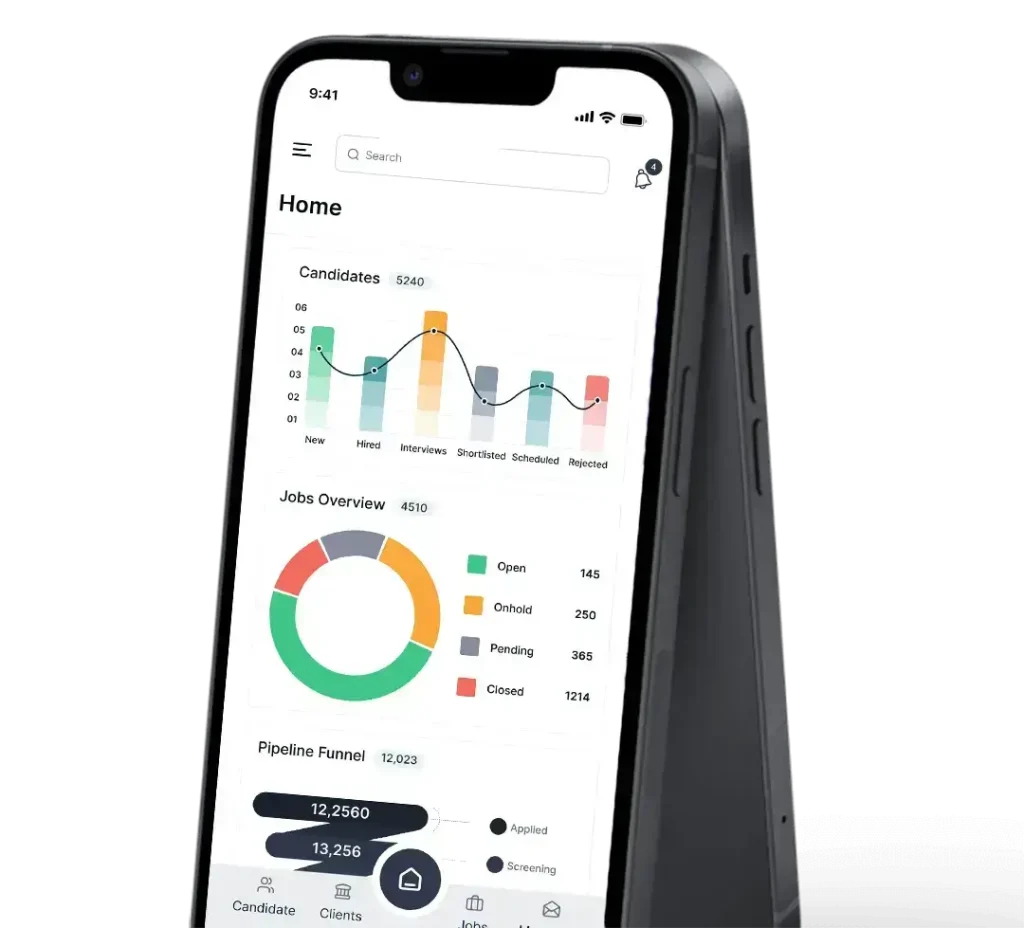The Evolution of HR: From Manual to Strategic
Even if they were useful in and of themselves, traditional HR systems were mostly created to handle the administrative aspect of HR. Typically constructed decades ago, these legacy systems were designed to handle functions including basic employee records management, benefits administration, and payroll processing. Even while they completed the task, they lacked the depth necessary to address the complex HR concerns of today and were primarily transactional.
HCM software, on the other hand, provides an all-encompassing method of managing the most precious resource of any company: its workforce. In addition to streamlining administrative work, contemporary HCM technologies are made to improve data-driven decision-making, talent management, workforce planning, and employee engagement. HCM software helps HR managers become strategic partners in corporate growth by utilizing cutting-edge technology. This helps to draw in top talent, increase employee retention, and match workforce goals with the organization’s overarching goals.
Streamlining Operations through Efficiency and Automation
HCM software’s capacity to automate a variety of HR processes is one of its main advantages over conventional HR systems. As traditional HR systems require substantial amount of human input which raises the risk of mistakes and inefficiencies. For instance, HR staff members frequently have to dedicate hours each week to tedious, repetitive operations like data entry, employee file management, and payroll calculation.
Many of these procedures may be automated using HCM software like Enwage, giving HR professionals more time to concentrate on more important projects. Benefits are easily tracked, employee records are updated in a centralized system, and payroll is computed automatically based on real-time attendance data. The platform also provides automated procedures for training programs, performance reviews, and onboarding, all of which lessen the administrative load on HR professionals and increase accuracy.
Businesses can increase operational efficiency and boost employee satisfaction by automating mundane processes, which can shorten response times to requests and information processing. The smooth incorporation of automation results in heightened efficiency and contented employees, rendering HCM platforms such as Enwage indispensable for businesses seeking to maintain their competitive edge.
2. Use Data Analytics to Make Well-Informed Decisions
Data is frequently referred to be the “new oil,” and data-driven decision-making in HR can greatly increase productivity. Advanced data analytics features in most HCM software solutions enable businesses to monitor and evaluate various indicators, including employee performance, recruiting effectiveness, and turnover rates.
Make the most of these analytics tools to learn more about your workforce and increase productivity. For instance, you can identify top performers and pinpoint areas where staff members require improvement by evaluating performance data. Then, you can modify your training initiatives accordingly. Additionally, you can ensure that you attract and retain the best resources by streamlining the hiring process with the use of recruitment data analysis. HR managers may make better decisions thanks to these insights, which raise employee satisfaction and boost overall productivity inside the company.
Transforming Information into Insights with Data and Analytics
The capacity of HCM software to deliver actionable insights and real-time analytics is one of its most revolutionary aspects. Data silos, or information scattered across many platforms, are a common problem with traditional HR systems, making it challenging to provide a comprehensive view of staff performance. When HR departments use traditional systems, they typically have to manually compile data, which can be error-prone and time-consuming. Decisions are therefore frequently made using inaccurate or out-of-date information.
However, the goal of HCM software is to consolidate all HR data onto a single platform. Every bit of information is available with just a click, ranging from workforce diversity and wage trends to hiring analytics and employee performance. With the help of strong analytics features provided by contemporary HCM systems like Enwage, HR professionals can track key performance indicators (KPIs), forecast employee attrition, evaluate engagement levels, and spot talent gaps. HCM software converts unprocessed data into actionable intelligence in real-time, empowering HR directors to make data-driven choices that support the organization’s overarching strategic objectives.
Predictive analytics, for instance, helps companies anticipate labor trends and plan ahead for requirements, making sure they have the proper people on hand to satisfy organizational objectives. Businesses can identify potential causes of employee attrition and address them before it’s too late by evaluating employee engagement data. In the end, having access to data and analytics gives you a competitive edge that traditional HR systems just can’t match.
Enhancing Engagement and Satisfaction in the Workplace
In today’s competitive employment market, employee experience is becoming more and more significant. Conventional HR systems frequently lack the resources required to promote employee engagement and satisfaction because they are largely focused on administrative duties. Organizations run the danger of alienating their workforce, which would reduce productivity and increase employee turnover, if they don’t have appropriate procedures in place to handle performance reviews, career development, and internal communication.
On the other hand, HRM software gives the employee experience a lot of weight. Employees can access their information, request time off, and change personal details from a single, user-friendly interface using self-service portals offered by modern HCM platforms. HR departments can also track and enhance employee happiness over time with the use of solutions like employee feedback platforms, career development modules, and performance management systems.
Employers may assist staff members to realize their full potential by tracking performance targets, developing individualized career development plans for each employee, and providing ongoing feedback with Enwage’s HCM platform. These characteristics raise general engagement as well as employee happiness, which results in higher retention rates and a more driven staff. HCM software assists businesses in creating a more devoted and effective workforce by providing a more dynamic and engaging work environment.
Flexibility and Scalability: Investing in the Future of Your HR
Conventional HR systems are frequently inflexible and challenging to expand, especially as businesses grow. A lot of legacy systems struggle to meet the demands of larger organizations with intricate hierarchies, several locations, and a worldwide workforce because they were created for small to medium-sized enterprises. Inefficiencies, inconsistent data, and an incapacity to adjust to shifting company needs might result from this lack of scalability.
In contrast, HCM software is designed to be flexible and scalable. Enwage and other cloud-based systems are built to scale with your business, effortlessly integrating new staff members, divisions, and even international expansion. Your HR solutions will always be current and flexible enough to meet changing demands thanks to the cloud infrastructure’s smooth upgrades and system connections.
Additionally, HCM software has customization features that help businesses adapt the platform to their own requirements. HCM platforms provide the flexibility needed to address the changing needs of a growing business, whether it’s introducing new compliance management modules or integrating with current payroll systems. By guaranteeing that companies utilizing HCM software won’t outgrow their HR capabilities, this future-proofing feature makes it a more long-term viable and economical alternative.
Compliance and Risk Management: Keeping Up with Regulations
Businesses need to be cautious in today’s regulatory climate to ensure that labor laws, tax rules, and data protection policies are followed. Conventional HR systems frequently find it difficult to stay up to date with these constantly shifting requirements, which exposes companies to expensive fines and legal liabilities. Without the proper tools, it can be difficult and complex to manage employee data in line with rules like GDPR or ensure compliance with labor laws.
These issues are specifically addressed by HCM software, which has integrated compliance management tools. HR departments can generate audit-ready reports, automate compliance tracking, and get real-time alerts on regulatory changes with the help of solutions like Enwage. HCM solutions assist companies in staying ahead of legal obligations, whether it is monitoring employee work hours for labor law compliance or guaranteeing data protection.
Additionally, human error – a frequent issue in conventional HR systems that depend on manual data entry and antiquated procedures – is reduced with HCM software. HCM systems lower the possibility of expensive errors and assist companies in upholding their good legal standing by automating compliance chores and offering comprehensive reporting capabilities.
Wrap Up
In a nutshell, making the strategic choice to go from a traditional HR system to an HCM platform can have a significant impact on your company’s success. HCM software is the personnel management of the future, offering advantages like better employee engagement, future-proof scalability, and data-driven insights in addition to increased operational efficiency. In the backdrop of all this extensive discussion, it can be safely argued that HCM is indispensable for streamlined, automated and sustainable growth and success.
But which one to choose and why is a million-dollar question. The answer is simple – invest in Enwage.
With its extensive and adaptable HCM platform, Enwage provides all the resources your company needs to modernize its HR approach and maintain its competitive edge in the fast-paced market of today. Enwage is made to match your demands and develop with you, whether your goals are to automate repetitive operations, acquire deeper insights into your workforce, or enhance the overall employee experience.








